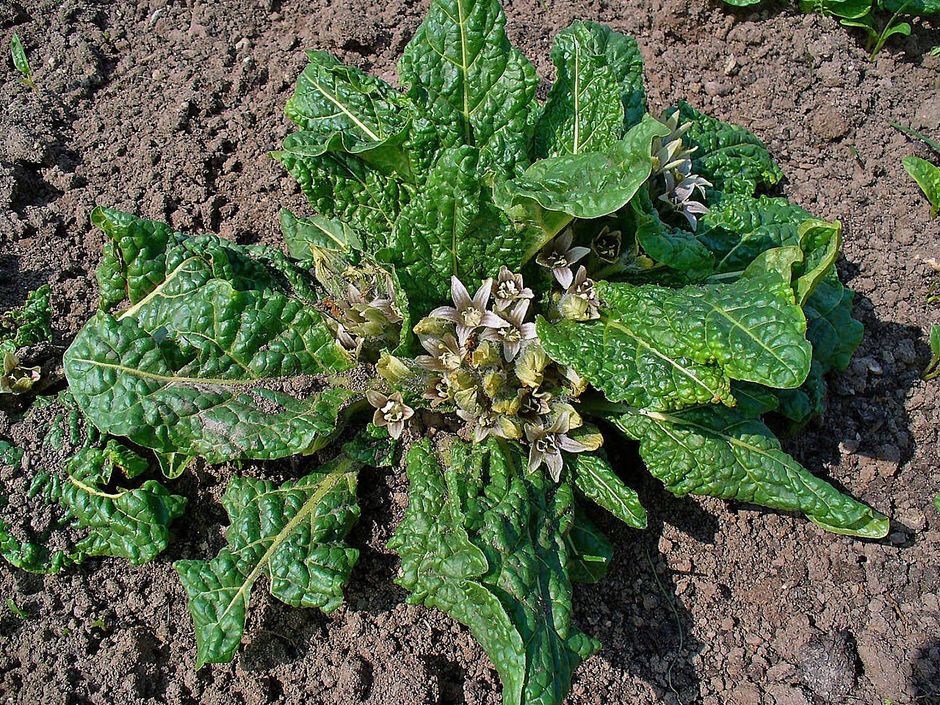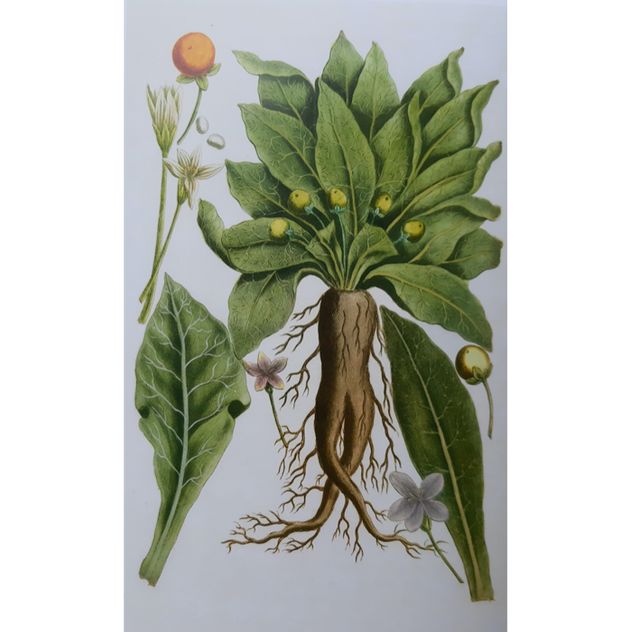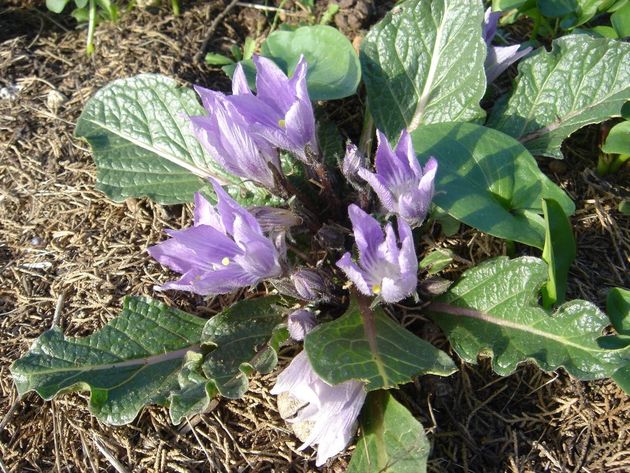In modern times they have been used therapeutically in very small doses to treat insomnia, rheumatic pain and gout. However, it is a very poisonous plant - an overdose can cause tachycardia, delirium and even death.
 Photo: H. Zell, CC
Photo: H. Zell, CC
Let us go early to the vineyards
to see if the vines have budded,
if their blossoms have opened,
and if the pomegranates are in bloom—
there I will give you my love.
The mandrakes send out their fragrance,
and at our door is every delicacy,
both new and old,
that I have stored up for you, my beloved.
(Song of songs 7:12-13)
The Hebrew word dudaý means “love apple”, and is applied to the fruit of the mandrakes as it was considered that they possess aphrodisiac and fertility-related properties. It was translated into Greek by the term mela mandrogôn, which clearly refers to this vegetable species.
The Orientals believed that moderate consumption of mandrakes guaranteed or, at least, facilitated conception. Biblical scholars agree that the Biblical term corresponds to the Mandragora autumnalis which grows throughout the territory of Israel. Sometimes it is confused with the Mandragora officinarum species, which is native to central and southern Europe and on almost all the Mediterranean coasts, However, as the Catalan botanist explained Font Quer explained (1), the former species is known popularly as female mandrake, while the latter is the male mandrake. So they are two different species, with very similar characteristics.
It is a perennial plant belonging to the Solanacea family (like the tomato or the potato) with large, wrinkled leaves arranged in the form of 5 to 40 cm rosettes which look rather like chard leaves. The blossoms appear on these leaves at the end of October, with colours which vary from white to violet. They are hermaphrodite flowers (each flower has both male and female organs) which, thanks to the activity of insects, cause the plant to self-fertilise.
The roots look like those of carrots, but can be as long as 1 metre, and are usually divided in two, as a result of which they look like the legs and body of a human being. The fruit is spherical, and orange to reddish in colour when ripe, which gives them the appearance of small tomatoes. The mandrake is a dangerous plant for human beings, as every part of it is poisonous.

[photo_footer] Image: Goodfellow, P. 2018, Une Histoire Naturelle de la Bible, Delachaux et Niestlé, Paris, p. 70. [/photo_footer]
The medical uses of this plant have been many and varied throughout history. In small doses it has been used to treat a range of medical conditions, from being a powerful laxative against worms and other intestinal parasites to combatting cancer. From its roots, numerous very poisonous alkaloids are obtained, such as hyoscyamine, scopolamine, escopine and cuscohygrine.(2) These substances have sedative, narcotic and hallucinogenic properties, on account of which they were used in ancient times as anaesthetics for surgical interventions.
In modern times they have been used therapeutically in very small doses to treat insomnia, rheumatic pain and gout. However, it must be borne in mind that it is a very poisonous plant and that an overdose can cause nausea, tachycardia, delirium and even death.
Several ancient cultures mistakenly believed that the fruit of the mandrake cured sterility. This myth is well-attested in the Bible, as the plant was abundant in the Jordan valley, and also in the fields of Moab, Gilead and Galilee. Women thought that by drinking mandrake juice they became more fertile.
This was why Rachel, Jacob´s sterile wife, asked her sister Leah, his fertile wife, to give her the mandrakes that Ruben had found in the field (Gen. 30:14-16) However, the text clearly specifies that Rachel’s fertility was not due to her consumption of mandrakes, but to God’s express will (Gen. 30:22-24). It was the Almighty who put an end to Rachel’s sterility, and not the superstitious belief in the power of mandrakes. Neither Jacob’s preferential love for Rachel, nor her prayers to have children, but exclusively the power of God.
This erroneous belief about this plant, related in people’s minds with love and fertility, can also be found in the Song of Songs (7:11-13).

[photo_footer] Photo: Antonio Cruz. [/photo_footer] Jacob’s family exhibits, perhaps more than any other, the conflicts and rivalries that resulted from polygamy. Everyone sought the satisfaction of their own selfish interest. Laban, Jacob’s father-in-law, married off both of his daughters, thus securing economic help from his son-in-law. Jacob gets two wives, even though he reserved his love for the sterile Rachel. Curiously, Jacob’s first four children are born to Leah, the wife whom he did not love. However, she is conscious that they were all born because it was God’s will. The envy of the infertile wife spurs her to act and, invoking the custom of having children by a servant, Rachel gives Jacob two children by means of Bilhah, who delivered the children “on Rachel’s knees” (Gen. 30:3). This expression alludes to the legal procedure of adoption, in accordance with the codes in force at the time. Leah does not want to be outdone in this race to produce the most descendants, and she gives Jacob two more sons, by means of her servant Zilpah. Finally, the sterile wife becomes pregnant, not on account of the mandrakes, but by the power of God, and she gives birth to Joseph, who would later be God’s instrument to save his brothers.
Although thousands of years have passed, today many families still suffer as a result of similar family problems. However, as believers, we have the enormous responsibility to create an atmosphere that is conducive to raising children in love and in healthy family relationships. We must not forget that God can transform people, and turn the most dysfunctional family into testimony to the presence of the fruit of the Spirit (Gal. 5:22-26).
1. Font Quer, P. 1976, Plantas medicinales. El Dioscórides renovado, Labor, Barcelona, p. 591.
2. Hanuš, Lumír O.; Řezanka, Tomáš; Spížek, Jaroslav; Dembitsky, Valery M. (2005). «Substances isolated from Mandragora species». Phytochemistry 66 (20): 2408-17.

Las opiniones vertidas por nuestros colaboradores se realizan a nivel personal, pudiendo coincidir o no con la postura de la dirección de Protestante Digital.
Si quieres comentar o